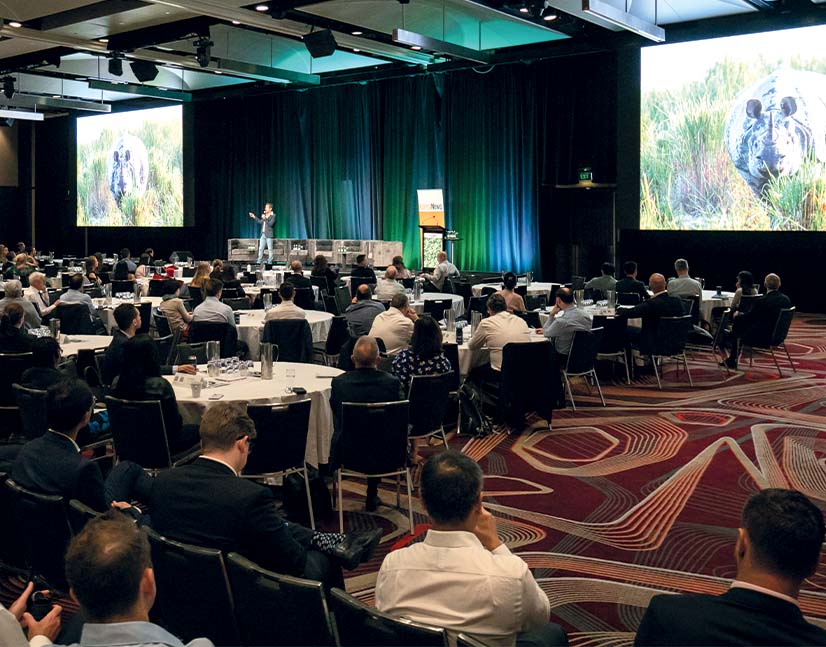
Australia prepares for mandatory climate reporting
The Australian government will launch a public consultation on mandatory climate reporting this year, starting the process of aligning the country with its global peers. Market participants say the move, while overdue, will be a boon to business, capital flows and the country’s reputation as a responsible international citizen.
Dan O'Leary Deputy Editor KANGANEWS
Several developed countries have pressed forward with mandatory climate reporting (see table), leaving Australia behind. But the change of federal government in May has sparked endeavours to make up for lost time, including progress on a range of sustainability and climate-related issues.
MANDATORY REPORTING AROUND THE WORLD
| Country | Progress |
|---|---|
| New Zealand | Will implement TCFD-aligned mandatory reporting for major financial-sector entities by 2023. UK ~1,300 of the country’s largest companies required to include statements on climate risks in annual financial reporting from April 2022. |
| EU | EC proposed Corporate Sustainability Reporting Directive in April 2021 to amend existing reporting requirements. Implementation in October 2022; all large organisations in the EU required to report by 2023. |
| Japan | Companies listed on Japan’s Prime market – ~4,000 – required to comply with TCFD-aligned disclosure requirements from April 2022. |
|
Brazil |
Central bank mandated inclusion of climate-related risks in company stress tests for all banks by July 2022. Banks to file quantitative climate risk reports by June 2023. |
| Hong Kong | Climate-related reporting mandatory by 2025, with listed companies and financial institutions required to disclose TCFD-aligned climate risks in their reporting. |
| Singapore | Financial, energy, and agriculture, food and forest products industries began TCFD-aligned reporting in July 2022. Listed materials and buildings, and transportation companies to be added in 2024. |
| US | Securities and Exchange Commission has proposed requirement of climate-related disclosures in statements and periodic reports, including information about climate-related risks. |
Source: KangaNews 23 September 2022
The highest profile of these was the passing of the Climate Change Act in September. The new law implements national net zero commitments and codifies net 2030 and 2050 emissions reductions targets under the Paris Agreement. But sustainable finance market participants believe progress on the introduction of a mandatory reporting regime aligned with the Task Force on Climate-related Financial Disclosures (TCFD) could be just as significant.
Australia’s treasurer, Jim Chalmers, on 1 August moved forward on pre-election commitments by mapping out plans to coordinate the country’s climate disclosure framework alongside global standards, with an alliance of 20 industry associations led by the Australian Banking Association.
The group tabled a joint submission to the London-based International Sustainability Standards Board (ISSB), which recently published draft risk reporting rules. At the time, Chalmers said the government wants Australia to provide clearer guidance and for disclosures to be more usable, reliable, credible, and comparable.
Kristy Graham, executive officer at the Australian Sustainable Finance Institute (ASFI) in Canberra, says the finance sector supports internationally harmonised mandatory climate disclosures. “The hope and expectation is that countries will use the ISSB standards as a baseline for mandatory disclosures. This will give them greater comparability and credibility,” she tells KangaNews Sustainable Finance.
ASFI hosted a closed-door roundtable session with Stephen Jones, Australia’s federal assistant treasurer, and industry stakeholders in early September. Mandatory climate reporting was a key discussion topic. Off the back of this meeting, market participants reveal the federal government could launch a consultation as early as mid-October. The federal government did not respond to requests for comment.
According to Ilona Millar, Sydney-based partner and climate change and sustainability team leader at Gilbert + Tobin, Australian submissions to the ISSB consultation show broad domestic support. “There is some nuance in the technical detail on how a regime is presented and implemented, and the regulatory circumstances within Australia that will need consideration,” she tells KangaNews Sustainable Finance. “But there is a lot of goodwill toward bringing in a regime and moving away from the voluntary approach.”
Australia’s precise implementation trajectory is unclear, but market users are starting to coalesce around certain expectations and limitations (see box).
Implementation in action
The Australian federal government’s impending consultation on mandatory climate reporting is the first step toward implementation. Market participants say the government’s next move and full implementation timeline will depend on a range of factors, such as whether the rules need legislation.
The international experience of mandating climate reporting varies. Some countries have used legislation while others have dictated measures via central banks and other regulatory bodies.
Ilona Millar, partner, climate change and sustainability team leader at Gilbert + Tobin, expects the government to draw on the international experience to craft its consultation. Authorities are likely to look most closely at the US Securities and Exchange Commission’s consultation, alongside the UK and New Zealand experience.
In 2020, New Zealand became the first country to announce it would adopt a mandatory climate-related financial disclosure regime. In October last year, it gained royal assent for the Financial Sector (Climate-related Disclosures and Other Matters) Amendment Act, and the External Reporting Board started work on implementation.
Millar says some reporting legislation already exists in Australia for companies above a certain emissions threshold. “We also have a voluntary process sitting with the Clean Energy Regulator,” she notes. “When it comes to climate-related risks, the natural home for the corporate reporting framework will be with Australian Securities and Investments Commission [ASIC] and Australian Prudential Regulation Authority.”
She explains amendments to the Corporations Act and the ASIC Act will be needed, alongside changes to regulations and guidance documents. “The government will release a discussion paper, which will set out initial thinking and some proposals and questions. The government will then assess responses, create a policy paper and draft amendments to any legislation or regulations to implement the proposal, which will be subject to further consultation.”
There is also potential for the process to have a protracted passage through the halls of government. For instance, given the interest by various government and independent politicians, the draft policy could be referred to a Senate committee to evaluate the different options, Millar explains.
She adds: “There is appetite for reform now but there is also a lot going on, including a review of the safeguard mechanism, the recent passing of the climate legislation and an upcoming review of the Emission Reduction Fund. There is appetite to move quickly, but there are several other issues progressing in parallel.”
Overall, Millar estimates a 2024 start date for mandatory reporting may be the most reasonable thing to expect.
Kristy Graham, executive officer at the Australian Sustainable Finance Institute, tells KangaNews Sustainable Finance the initial consultation will likely focus on how mandatory reporting is phased in and implemented. She agrees, however, that a rapid rollout may be challenging as companies grapple with data and capacity challenges.
“There is clearly a different level of capability between very large companies and SMEs or mid-caps,” Graham points out. “It is possible that phasing in requirements will mean larger entities report first and then smaller corporates are included over time. We expect these issues to be explored during the consultation process.”
TROUBLED HISTORY
Graham emphasises that the conversation between business and government on environmental, social, and governance (ESG) issues is new. The previous government resisted more progressive measures and pushing for change in this environment sometimes came with political risk, she adds.
The former government made its position on ESG issues clear. In 2021, when then federal treasurer, Josh Frydenberg, sponsored a parliamentary Trade and Investment Standing Committee Senate inquiry into bank lending practices, it concluded that banks should be forced to provide services to all “law-abiding businesses” including exports of coal and live animals.
The inquiry, chaired by notoriously retrograde Nationals MP George Christensen, also called for Treasury to examine “activist pressure” on banks in relation to lending to the resources industry. Labor and the Greens rejected the conclusions, arguing that incoherent climate policy was the major issue.
Despite public caution, the major banks pushed forward with voluntary reporting. Australian investors were more vocal: the Investor Group on Climate Change publicly called for mandatory reporting and mapped out a path in June 2021. In September 2022, meanwhile, a Principles for Responsible Investment, UNEP FI and Generation Foundation report called on the Australian government to adopt a reporting framework and implement a taxonomy.
Graham tells KangaNews Sustainable Finance: “Australian market participants are already on a trajectory to better disclosure given where markets are heading internationally. They are now able to be a lot more open and forthright about it, as well as what they believe to be the policy and regulatory framework needed to get better quality and broader coverage of climate and sustainability reporting.”
In an environment of private-sector leadership it could be asked whether moving to mandatory reporting will add significant value. Graham says the challenge with a voluntary system comes down to lack of uniformity of data. She argues that the federal government needs to set the rules to guarantee the quality and coverage of reporting, enabling financial institutions and the wider business community to make better-informed decisions, manage climate-related risks and invest.
“Australian market participants are already on a trajectory to better disclosure. They are now able to be a lot more open and forthright about it, as well as what they believe to be the policy and regulatory framework needed to get better quality and broader coverage of climate and sustainability reporting.”
Button TextINTERNATIONAL ALIGNMENT
The international community has been moving toward compulsory TCFD disclosure for some time, albeit with different speed of travel. In June 2021, the G7 backed the proposal, noting investors need high-quality information on climate risk.
An Australian mandatory regime would cement a development that is already ongoing globally. For instance, a 2021 report from the Governance and Accountability Institute shows the overwhelming majority of S&P 500 companies were publishing sustainability reports by 2020 – a more than fourfold increase over the past decade.
Perhaps the biggest question in the process of developing an Australian mandatory reporting regime is just how closely it should mirror global equivalents. There is general agreement that Australia’s outcome must be useful for offshore investors. Some jurisdictions, however, are already heading in slightly different directions. Europe’s regime is more proscriptive, for instance, while the UK and New Zealand are pursing principles-based mechanisms.
Millar says Australia’s regime must be comparable to other international jurisdictions to streamline the reporting process. “Some things will not be directly appropriate in the Australian market but there is a benefit in achieving a more consistent approach.”
She notes, however, that while implementation is still in early days, various jurisdictions are already throwing up key distinctions. For example, the US Securities and Exchange Commission (SEC) has proposed the inclusion of scope-three emissions and carve-outs for certain sectors.
The lack of reliable data on scope-three emissions could be a problem, Millar notes. She believes Australian authorities will examine other global jurisdictions and consider how what they are doing applies to the domestic context, in particular the Corporations Act, the ASIC Act and the various additional pieces of legislation where requirements for disclosure are likely to be embedded.
Despite the differences between implementation approaches, market users have a degree of confidence that the data collected should be similar across jurisdcitions. For instance, the SEC’s proposal will capture emissions data Australia already collects as part of the National Greenhouse and Energy Reporting Act, which requires companies emitting more than 25,000 tonnes of greenhouse gas a year to capture and report the data to the federal government.
The Greenhouse Gas Protocol, which provides the most widely used greenhouse gas accounting standards and defines scope-one, scope-two and scope-three emissions, was established in 1998. Michael Salvatico, head of Asia, Pacific, Middle East and Africa ESG solutions at S&P Global Sustainable1 in Sydney, says a more standardised reporting framework is necessary even though many companies are already doing some form of emissions reporting.
“One in three companies publishing environmental data, including scope-one, scope-two and scope-three figures, need correcting because of errors,” Salvatico says. “Scope-three downstream emissions data require the most attention with almost one in every two companies’ data adjusted.”
Millar says converting data into something investors and governments can digest will be challenging. “A large part of the emissions reporting framework is already in place but we need more clarity on how it is delivered to investors and regulators – how it fits with the emission reduction goals and targets companies are setting.”
From a technical perspective, data providers such as S&P and Bloomberg will likely tweak their platforms between jurisdictions. “We can help with most of the heavy lifting from a technology perspective because we have already built solutions that help firms comply with the European taxonomy,” argues Nick Burrough, ESG market specialist at Bloomberg in Sydney.
“There is some nuance in the technical detail on how a regime is presented and implemented, and the regulatory circumstances within Australia that will need consideration. But there is a lot of goodwill toward bringing in a regime and moving away from the voluntary approach.”
Button TextCOST OF DOING BUSINESS
The direction of travel may be relatively clear but there are still likely to be implementation challenges. Compliance costs are typically front of mind when industry considers any major business practice change. Market participants say, however, the cost of not acting on climate change is too high to let near-term resourcing be a barrier. Graham says data, law and accounting firms are tooling up and hiring for an influx in business (see box).
“Mandatory reporting will also deliver economies of scale, which supports better reporting from financial institutions,” she continues. “On the other hand, there is a data challenge particularly when it comes to scope-three. Systems that aggregate emission data and fill gaps in directly reported data will be needed.”
Millar says the level of detail required will dictate compliance costs. “With scope-three, capturing all the data from supply chains will add an additional collection task and assurance burden,” she adds. “To prepare reports in new formats and capture data that have not been captured before will mean firms need external advisers. Without a doubt, bringing in this type of regime will increase cost – but the greater transparency will benefit investors.”
For Burrough, the main issue is not reporting or compliance burdens but facilitating the transition to a less carbon intensive society.
“We should be looking at what makes the biggest impact – a focus on getting accurate emissions data is an important start,” he argues. “Emissions estimates will further help market participants fill data gaps and ensure investments and portfolios align with sustainability objectives and regulatory requirements. The broad adoption of this data can go on to support a material rebalancing of the portfolio”
Third-party bonanza
Data collection and dissemination will play a significant role in Australia’s mandatory reporting regime, particularly as and when scope-three emissions are included. The large accounting and data firms are expanding to meet the increase in demand.
When Stephen Jones, Australia’s federal assistant treasurer, met with the Australian Sustainable Finance Institute (ASFI) and other participants on 5 September to hash out key issues that are likely to affect the market, data companies such as Bloomberg and S&P Global featured prominently.
Their inclusion in the closed-door discussion illustrates their expected importance in the future disclosure regime, according to market participants.
Nick Burrough, ESG market specialist at Bloomberg, says the issues are complex but the goal is simple – to lower the amount of greenhouse gas in the atmosphere and therefore reduce the global temperature.
“Big data is the fuel for analysis, but we must keep the target simple,” he argues. “This is another task for companies to complete, but we can optimise it. Making data standardised and machine readable so vendors can scrape and make sense of the outputs for the investment community will be essential – and it will cut down on human error and cost.”
Bloomberg offers aggregate data services that scrape financial reports for emissions data. If carbon emissions are not reported, the company estimates a number based on reported data in similar sectors using AI and regression models.
“If a company reports some of its emissions, or a multinational discloses for a certain country, the platform can extrapolate from this as a representation of the total,” Burrough continues. “But there is more to it than sector averages. Maybe a company is not typical of its sector, such as an auto manufacturer that has a large loan book. We take care to look at the company below the headline.”
S&P Global splits its environmental, social and governance (ESG) reporting service between corporates and financial institutions (FIs), and it typically digs into the FIs’ portfolios and loan books looking for Task Force on Climate-related Financial Disclosures-aligned exposures. For companies, it applies a corporate sustainability assessment (CSA).
Michael Salvatico, head of Asia, Pacific, Middle East and Africa ESG solutions at S&P Global Sustainable1 in Sydney, says 71 Australian companies complete S&P’s CSA and are awarded an ESG score. S&P estimates the scores it applies using public information for companies that do not participate.
“On the FI side, our machine learning tools calculate the exposure at company level and apply this analysis to loan books. If we have access to a company and it opens its financials, such as its expense accounts, we can categorise this expenditure, for instance, and provide calculations.”
Salvatico says the analysis helps companies report. “Once we do the analysis, they can use it internally and then progress to reporting themselves,” he adds. “If sustainability is a core part of a company’s strategy it needs internal reporting – and this transparency leads to external reporting.”
Burrough says Bloomberg’s platform can estimate a company’s ESG score but firms should start reporting now. “The Bloomberg estimate does not necessarily help or hinder a company,” he argues. “But until more companies routinely report their scopethree emissions data in a consistent and accurate way, there will be an industry need for transparent estimates to help firms make decisions about how to best decarbonise their operations and mitigate climate-related risks.”
CORRELATION RESTORATION
The other major shift in market paradigm asset allocators have had to deal with is the breakdown in negative correlation between debt performance and that of traditional growth assets. This correlation was an advantageous relationship that saw bonds insulate equity downturns.
When debt and equity markets respond to a common influence, in this case a sharp rise in inflation, prices are inclined to move in tandem – or be positively correlated. This story has played out many times of late – starting with the financial crisis, when common themes of illiquidity and financing risk saw debt and equity markets fall in unison.
A well-timed increase in allocations to fixed income would likely coincide with a restoration of the negative correlation. Super funds say a return to a negative correlation between bonds and equities would be welcome, but they again expect this to be some distance away.
The seesaw relationship between the debt and equity markets that underpins the traditional risk model could also re-establish itself once the tightening cycle has played out.
Then again, Apsey warns there is no guarantee the reality will match what makes sense on paper. “The catch-all disclaimer is that correlations change over time and they rarely work when we want them to,” he comments. “Nothing is constant, and even if we can say the negative correlation will hold it depends on where equity and bond markets are as well as valuations in asset classes like property and infrastructure. A lot of moving parts that make up a portfolio.”

WOMEN IN CAPITAL MARKETS Yearbook 2023
KangaNews's annual yearbook amplifying female voices in the Australian capital market.
















